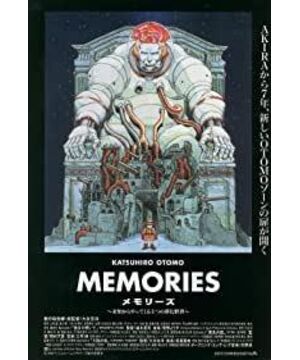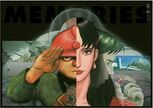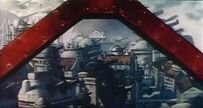(True, many pictures, enter with caution)
It came for the fame of Jin Min and Otomo Keyang. Among the three, my favorite is "Cannon Fodder", in which the script art of the original work was all overseen by Otomo Keyang.
The unique opera feature of "Magnetic Rose," a story about being imprisoned in memory, really appeals to me. The way of telling is not very careful. What to say about Stink Bomb, don't like the story, a comedy? Probably because it's not elegant enough to be forced.
"Street of Cannons" is very unique. In addition to the accustomed girl's cartoon style and the beautiful "Weima's House" plus a "Lost Wall", it can make me feel unique, and it is not easy. For the acceptance of the style of painting, how to say it, there is still a certain process, how to make the audience not lose interest in this process, in fact, this is a technical problem. For example, I didn't watch "Akira" after watching it (but maybe I didn't find its pain point?).
Technical aspects:
1. The long lens (one lens in the end) is used particularly well. This is also related to the smooth and compact arrangement of the plot.
2. Cannons are often used for transitions. I counted about 5.6 times. The main line is the parent line and the child line, and basically every cut is switched between the parent line and the child line. Cannons appear to be everywhere. It is the center of the whole city and the life center of all the people in the city (for example, father and son).
One of my favorites that uses other transitions: dad changing clothes in the changing room, cutting from a photo in the closet to the kid in class.
3. I used the picture through the railing many times. Expressed a feeling of confinement and depression. For example, at the beginning, when the father and son took the elevator downstairs, the panoramic view of the city was shown through the elevator; when the Fuhrer successfully fired the cannon and cut the woman in the ammunition factory; at the end, the father watched the TV and the son drew a picture through the window frame.
4. The movement curve is beautiful. In the opening scene, after the child saluted the head of state, the "turn around - left - right rear - right front - left front" flew to the mother in a circle.
And at the end, it is also a child. After painting and asking his father questions, the one who flew to the room "turned - front - left - inertial left turn".
There is also the part where the head of state takes the stage.
Plus a section where the Führer fires a shell.
The narrative is compact and harmoniously structured, but a day of father and son draws a panorama of a city.
Starting from the father and son's home, after showing that the city is a city of cannons, part downstairs. The father went to work, prepared the artillery, loaded it, fired (the head of state), rested (social movement personnel), loaded the third shell, was "injured at work", and went home. The son goes to school, goes to class, eats lunch (classmates in musical helmets are taken away), and goes home. Meet again at home to end the day.
In this part of the son, there is a small echo, getting up from the bed and returning to the bed to finish. Salute to the Führer in the morning and Salute to the Führer in the evening.
The other characters interspersed are also full of personalities, and none of them is a waste pen. The other workers in the fort, the women in the factory, the foreman, the head of state, the social activists, the classmates, the gossip Obasan, the officers, the TV broadcasts... that's about it. Not to elaborate.
A recurring slogan in the animation: Fire with all your might for the city! It also reached the echo before and after - one appeared in the part where my father took the train to work, and one appeared in the final TV broadcast. This seems to be a war without enemies.
For the animation theme, more agree: create imaginary enemies to rule the people inside. The whole film revolves around the cannon, but there is no enemy from beginning to end. "For the city" is the whole reason. In this gray area, the only bright color is wanting to fly, expressing his likes and dislikes freely, and wanting to be a leader's child. But who knows what his future will be like? In the closed and icy city of cannons.
With profound thinking and touching warmth, this kind of work will be the best animation work.
View more about Memories reviews











